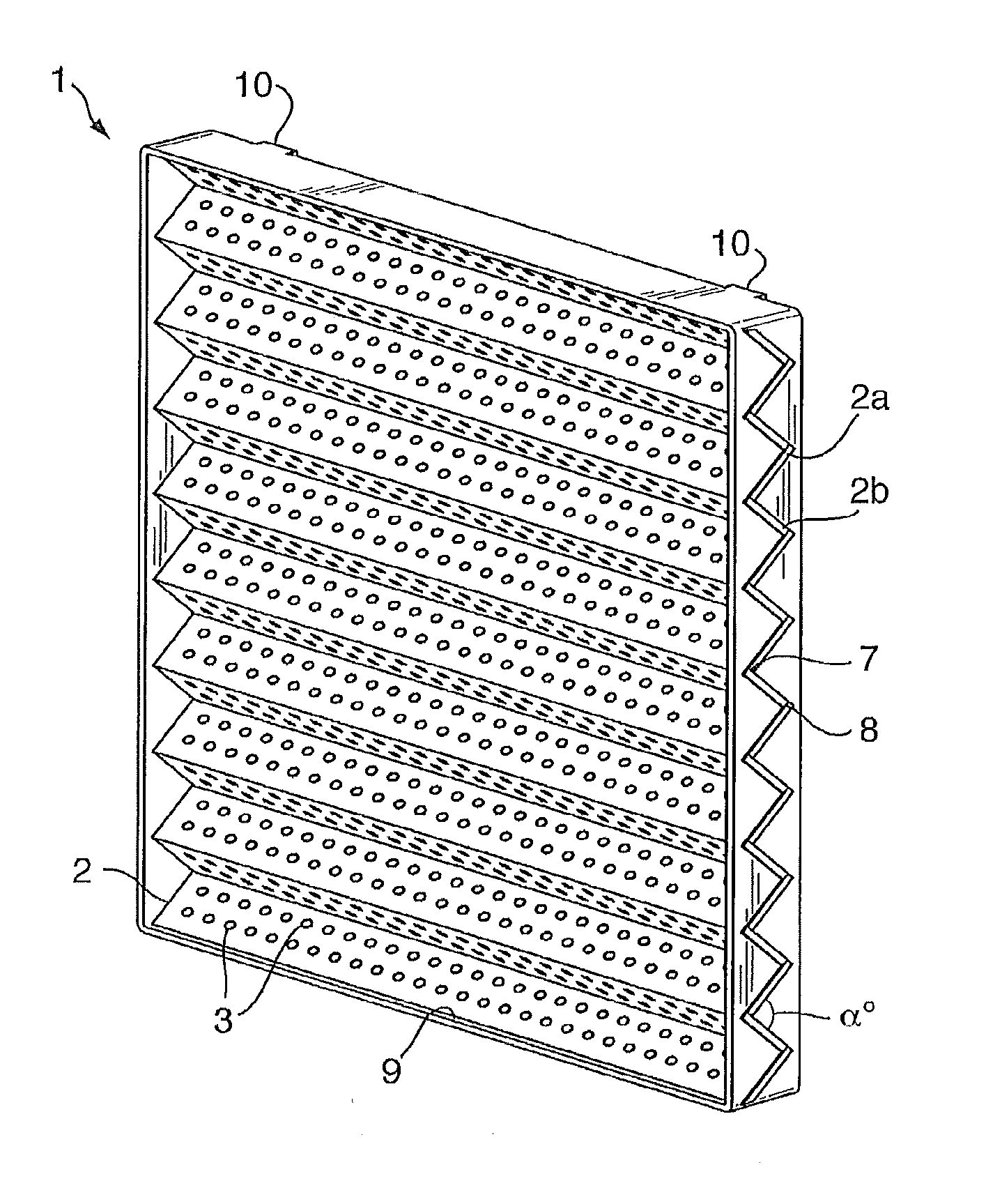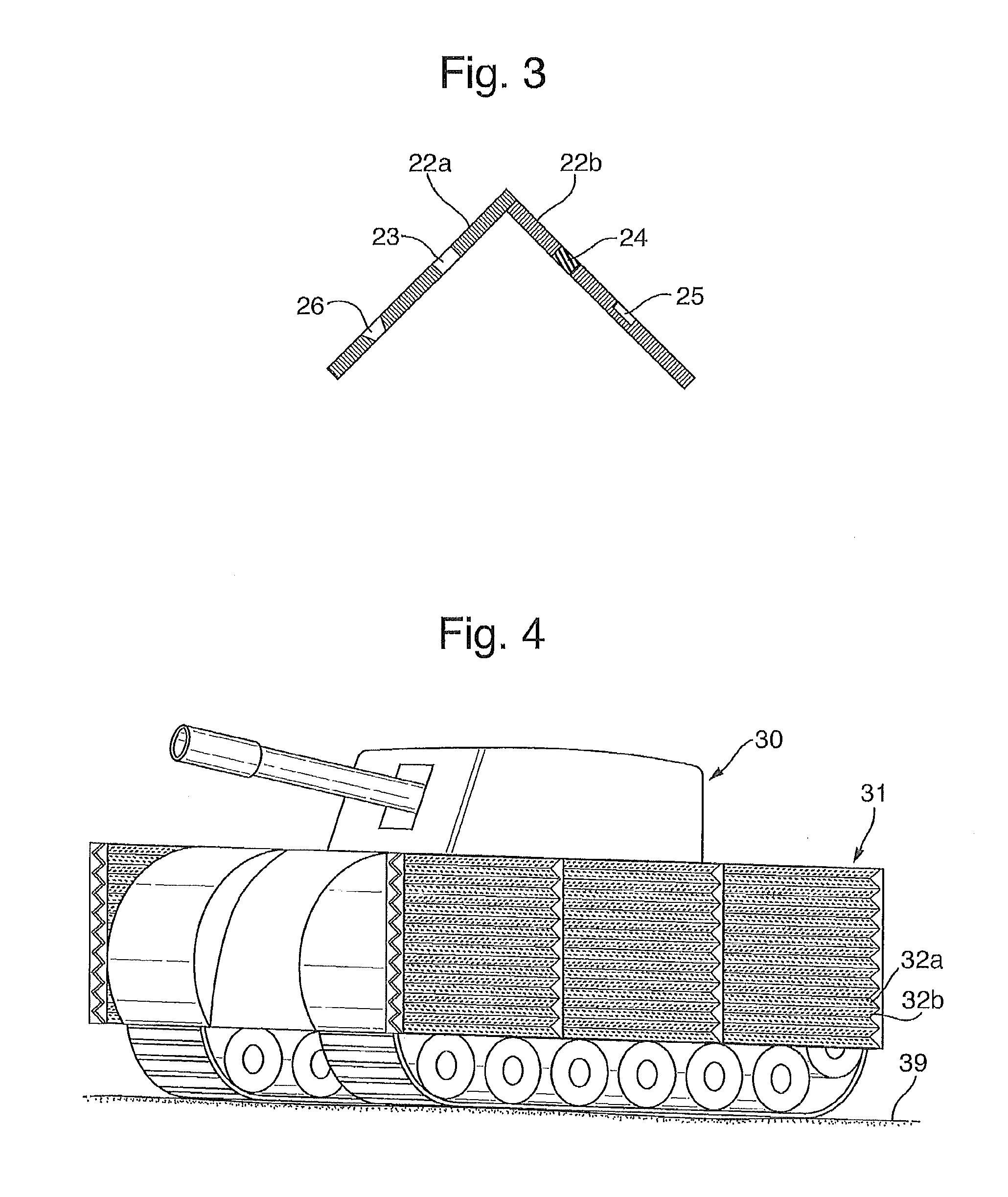Armour assembly
a technology for armour and parts, applied in the field of armour parts, can solve the problems of increasing the likelihood of ballistic projectile disassembly, not providing high general protection from all forms of hazards, and not very effective at defeating certain threats, etc., to achieve effective armour arrangement, reduce the cost and burden of replacing damaged armour, and reduce the effect of cost and burden
- Summary
- Abstract
- Description
- Claims
- Application Information
AI Technical Summary
Benefits of technology
Problems solved by technology
Method used
Image
Examples
Embodiment Construction
[0055]Turning to FIG. 1, there is provided an armour system 1, which is optionally contained in a housing 9 (or frame) to form an appliqué armour system, or the armour 1 may be directly applied to an existing armour structure. The housing 9 contains a plurality of at least two elements 2, wherein elements 2a,2b are joined at their apex 7 and troughs 8, to form a continuous armour system. The elements 2, comprise a plurality of perforations 3. The housing may be fixed by lugs 10 to a vehicle. The elements 2a and 2b, are set an angle(α) so as to provide a chevron arrangement. The elements 2a, 2b in this arrangement are provided as elongate elements. The device is mounted on the vehicle such that the elements 2, their longest dimension axis is substantially parallel with the ground plane on which the vehicles wheel base is located (see FIG. 4).
[0056]FIG. 2 shows a cross section of elements 12a and 12b angled apart from each other an angle(α), with a perforation 13 located in the elemen...
PUM
 Login to View More
Login to View More Abstract
Description
Claims
Application Information
 Login to View More
Login to View More - R&D
- Intellectual Property
- Life Sciences
- Materials
- Tech Scout
- Unparalleled Data Quality
- Higher Quality Content
- 60% Fewer Hallucinations
Browse by: Latest US Patents, China's latest patents, Technical Efficacy Thesaurus, Application Domain, Technology Topic, Popular Technical Reports.
© 2025 PatSnap. All rights reserved.Legal|Privacy policy|Modern Slavery Act Transparency Statement|Sitemap|About US| Contact US: help@patsnap.com



